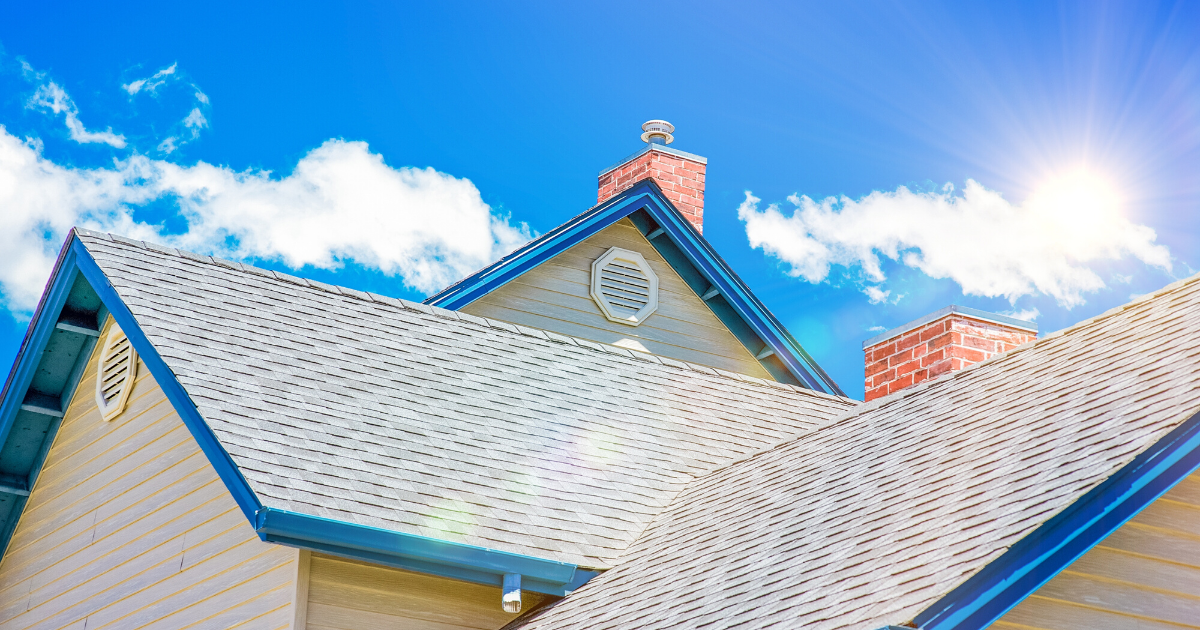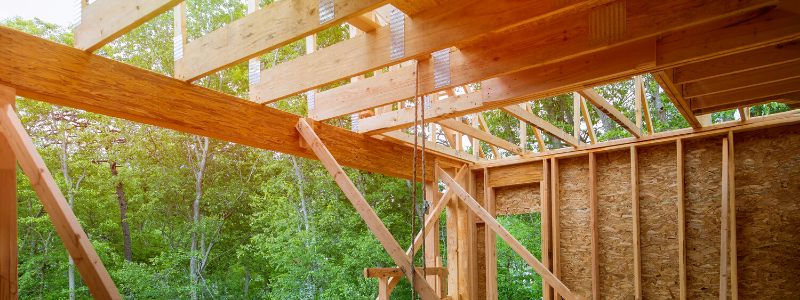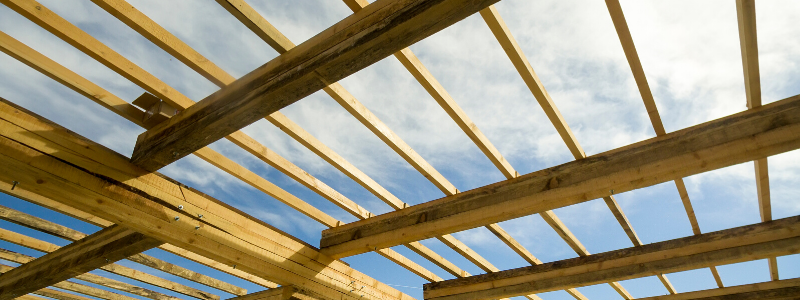
Roofing Basics
Roofs are complex structures that consist of many different components. To understand how a roof is built and maintained, it’s important to know some roofing basics. This will allow you to feel more confident when hiring an expert roofer. This information may provide useful when the time comes to make needed repairs or completely replace a roofing system.
These roofing basics consist of knowing for definitive characteristics:
- what roofs are made of
- the individual structures that comprise a roof
- how a roof is built
- what to look for when purchasing a new roof
Read on for more, or contact us directly at (303) 443-5843 for immediate answers. We’re happy to provide general information on roofing systems as well as a free estimate.

Roofing System Basics
Roofs can be made out of a variety of different materials. Each material serves the same basic function—keeping the interior of your home protected from the elements. However, some materials are better at serving that function than others. It depends on the home itself, as well as the climate of where the home is located.
Here are some good roofing basics to remember about climate and roof styles. The two most common roof types are flat roofs and sloped roofs. Flat roofs are often used in areas where the climate is dry and arid, meaning that rain and snow are rarities. Sloped roofs are often used in areas where rain and snow are more frequent since sloped roofs allow rain and snow to be redirected off of the roof and into the ground.
Flat roofs
Flat roofs are often made of a built-up roof, PVC membrane, EPDM rubber, or modified bitumen. Each one of these materials is quite inexpensive, making them easier to use and install than the materials you would use for a sloped roof. But, along with that, these materials are designed for durability and longevity. They can withstand heavy foot traffic as well as intense heat.
Sloped roofs
Sloped roofs are often made of materials such as wood, steel, slate, or sometimes flagstone. These materials form the tiles, corrugated sheets, or shingles that protect the under-portion of the roof from rain and snow. While these materials are quite durable, they are used, primarily, to prevent water from flowing into the under-portion of a sloped roof.

Roofing Structure
Every roof consists of several different facets. Each one of the facets that comprise a roof serves a very important function that ensures the roof is stable and capable of serving it’s primary function – keeping the interior of your home protected from the elements.
Rafters/Trusses
In order for a roof to be held up, there must be a structure in place that has the ability to hold up the roof. For most roofs, this structure consists of several rafters, or trusses, depending on the roof. Rafters/trusses are often made of either metal or wood, and they serve as the basic foundation of every roof.
Sheathing
On top of the rafters/trusses, there is sheathing. Sheathing often consists of solid boards or sheet material. With this sheathing, the structure above the rafters/trusses – your home – is not only protected, but the structure above the rafters/trusses has a stronger foundation, which allows the roof to be stable and secure.
Underlayment
To enhance the effectiveness of the sheathing, underlayment is laid. Most underlayment is made of paper, and it’s used to shield the sheathing from rain and snow.
Roof Covers
On top of the underlayment, there’s the roof cover. For flat roofs, this is usually PVC membrane, built-up roof, EPDM rubber, modified, or modified bitumen. These materials form the flat surface of the roof. But, for sloped roofs, the roof cover usually takes the form of shingles and tiles.
How Is A Roof Constructed?
Let’s review some roofing basics for the actual roof build. In order for a roof to be constructed properly, there are all kinds of different variables that must be considered and understood.
Select styles
To begin constructing a roof, a style must be chosen. As mentioned earlier, the two most common roof styles are flat and sloped. For wet and snowy climates, like in Colorado, a sloped roof is far more practical. But, for arid climates where rain and snow are rarities, a flat roof can be very useful.
Select materials
When a style has been chosen, materials must be selected. Flat roofs tend to work very well with materials such as asphalt and metal. Sloped roofs work well with wood and metal, as well as tiles and shingles made of clay, wood, and metal.

Measuring a roof
Right after the style and materials have been chosen, a series of measurements must be taken. During this step, it’s important that strict attention to detail is provided; the measurements should be precise for a final, quality product. These measurements have to do with the
- size of the roof
- where the roof is going to be installed
- the pitch of the roof.
Without these measurements, it’s likely that the roof will be inconsistent and, as such, inadequate for the building it’s being installed on.
All of the style and material choices will take a while, and the same goes for the measurements. But, when that process is finished, the actual building of the roof can commence. Building the roof consists of four basic stages.
Construction roofing basics
The first stage consists of setting up the trusses/rafters. Without these structures, there’s no foundation for the roof. Then, the second stage consists of laying out sheathing along the trusses/rafters, and the sheathing provides the basic surface of the roof. Right after that, underlayment is laid across the sheathing, to protect the sheathing from rain and snow. Finally, the cover of the roof is installed.
For people who own commercial properties, it’s especially important that they understand how the commercial roof of that property was installed. Without an understanding of the materials that were used, the measurements of the roof, and the roofing systems that the commercial roof uses, it’s a lot more difficult to properly clean that commercial roof.

What Should New Homeowners Know About Their Roofs?
When buying a home, homeowners should be aware of several key attributes. Each one of these attributes greatly affects the longevity and quality of the roof, as well as the roof’s ability to keep your home protected from the elements.
Age of Your Roof
Every new homeowner should be aware of just how old their roof is. Most roofs last twenty-five-years, give or take. Past that date, though, the roof gradually loses its durability and becomes weaker. If the roof of that new home is old, then it may need to be replaced far sooner than expected.
Type of Roof
Every homeowner should be aware of whether or not any of the shingles – or tiles, depending on the roof – on their roof have fallen off, or are in the process of falling off. If they are, that can easily lead to moisture falling through the roof and into the home. Plus, it also means that the roof is quite old and in need of repairs and, possibly, a replacement.
Condition of Your Roof
If those same shingles are falling apart and losing granules – granules are small pieces of the shingle that comprise the entirety of the structure- that’s a sign that the shingles need to be replaced. Without these granules, the shingles are incapable of protecting your home from the elements.
On a flat roof, new homeowners must make sure that the roof is smooth, clean, and free of punctures and cracks. Punctures and cracks can easily allow for moisture to flow straight into the home.
Along with that, it’s also important to check for whether there’s a build-up of mold or mildew, and whether or not water is congregating along a certain area of the roof. If there’s a build-up of mold and mildew, this could lead to structural problems later on. If water is pooling up around certain areas, that’s a sign that the drainage on the roof is lacking.
Summary of Roofing Basics
- On a flat roof, it’s important to make sure that the roof is free of punctures and cracks
- The two most common styles of roofs are flat roofs and sloped roofs. Flat roofs are meant for arid climates. Sloped roofs are meant for climates where rain and snow is a regular occurrence
- Roofs are comprised of rafters/trusses, sheathing, underlayment, and roof covers. Each has its own function and is an essential part of keeping a roof healthy and maintained.
- Different materials and styles are better choices, depending on the climate
- New homeowners should make sure there is no mold, mildew, or water on the roof
- If the shingles are losing granules, that means that they must be replaced because those shingles protect the home from rain and snow. For more tips on when it’s time for a replacement roof, go here.
- Every new homeowner must know the exact age of their new home’s roof




































